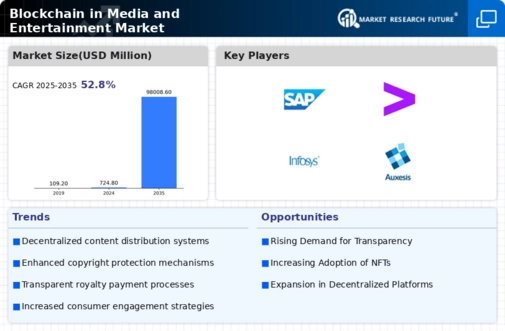By Region, the study segments the market into North America, Europe, Asia-Pacific, Middle East & Africa, and South America. North America held the highest share of the Blockchain in Media and Entertainments market by region in 2021, and it is expected to do so for the rest of the forecast period. This is owing to the presence of big competitors who offer cutting-edge solutions and make considerable investments in technologies, creating profitable opportunities for the market. The region is rapidly adopting innovative tools, and digitalization is likely to accelerate blockchain revenue development in the media and entertainment markets.
The United States is the largest contributor to market revenue growth, and Canada is the fastest growing contributor. Early adoption of new technologies and digitization are likely to drive blockchain growth in the media and entertainment markets.
As a significant leader in blockchain development, Canada is one of the region's fastest rising countries. This is primarily due to projects like as the Blockchain Research Institute (BRI) in Toronto, the Blockhouse in Montreal, and the BC Blockchain Forum in Vancouver. These programmes bring together start-ups, private sector businesses like IBM and Accenture, and various levels of government to establish a strong foundation for the developing ecosystem.
The Asia Pacific (APAC) region's Blockchain in Media and Entertainment market is expected to grow at the fastest rate in the Blockchain in Media and Entertainment market, owing to an increase in the incidence of data piracy, an increase in the adoption of advanced solutions in the media & entertainment sectors of developing countries such as China, India, South Korea, and others, and an increase in the number of Blockchain in Media and Entertainment service providers in this region.
The sheer number of users is also one of the key factors for the expansion of the blockchain market. Because of the abundance of youthful, technology-oriented curious minds, the region's interest in cutting-edge technologies is fueling industry growth.
In 2021, Europe's market accounted for a sizable revenue share. Blockchain in media and entertainment is widely recognised in Europe as a result of increased government initiatives and ambitions to develop technology, as well as an increase in desire for transparency in the region.
Further, the countries considered in the scope of the Blockchain in Media and Entertainment market are the US, Canada, Mexico, UK, Germany, France, Italy, Spain, Switzerland, Austria, Belgium, Denmark, Finland, Greece, Hungary, Italy, Luxembourg, Netherlands, Norway, Poland, Portugal, Slovakia, Sweden, Romania, Ireland, China, Japan, Singapore, Malaysia, Indonesia, Philippines, South Korea, Hong Kong, Macau, Singapore, Brunei, India, Australia & New Zealand, South Africa, Egypt, Nigeria, Saudi Arabia, Qatar, United Arab Emirates, Bahrain, Kuwait, and Oman, Brazil, Argentina, Chile, and others.

















Leave a Comment